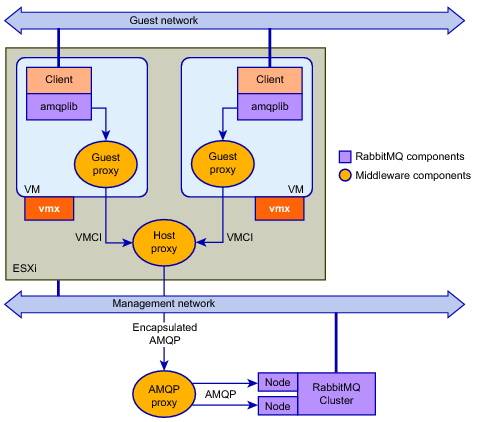On the ESXi host in ESXi host with Stream vSockets and RabbitMQ, two virtual machines contain a message queuing client that communicates with a guest proxy through amqplib. Guest proxies communicate with the host proxy over vSockets, which treat each guest connection as a separate session. The host proxy multiplexes these sessions and communicates with the RabbitMQ proxy over a single TCP/IP socket, passing encapsulated AMQP. A RabbitMQ node runs on a virtual machine. The RabbitMQ cluster is a collection of RabbitMQ nodes that are assembled for reliability and scaling. The AMQP proxy splits-out multiplexed sessions of individual connections to a RabbitMQ node. All this takes place on the management network, reducing traffic on the guest network.
VMware Host with Datagram vSockets for NFS in Guests shows an example of a VMware host acting as the NFS server for the home directories of its three clients: a Windows guest and two Linux guests. NFS uses datagram sockets for file I/O. The NFS code on the VMware host must be slightly modified to use vSockets instead of UDP datagrams.

